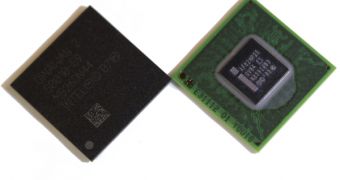Intel continues its effort to increase its presence in the market for low-power computing processors, with the introduction of its latest Moorestown platform. Designed for tablets and smartphones, the new series of Atom CPUs will enable Intel to better compete with ARM, the company that's responsible for the majority of chips inside today's smartphones. According to the Santa Clara, California-based chip maker, the new platform is capable of delivering a PC-like experience with full-Internet on small, ultraportable devices.
“Intel has delivered its first product that is opening the door for Intel Architecture [IA] in the smartphone market segment,” said Anand Chandrasekher, Intel senior vice president and general manager of the Ultra Mobility Group. “Through 'Moorestown,' Intel is scaling the benefits of IA while significantly reducing the power, cost and footprint to better address handheld market segments. As a result of our efforts, the Intel Atom processor is pushing the boundaries of higher performance at significantly lower power to show what’s possible as handheld devices become small, powerful mobile computers.”
The new platform is designed on the company's 45nm manufacturing technology and includes the new Atom Processors Z6xx series, formerly codenamed “Lincroft” SoC (system-on-chip). It also includes the Intel Platform Controller Hub MP20 (codenamed “Langwell”) and a dedicated Mixed Signal IC (MSIC) (codenamed “Briertown”). The platform is said to boast 140 million transistors and promises a >50x reduction in idle power, while offering a performance increase, compared to its predecessor.
Among the highlights of the new platform, Intel claims that the platform is capable of delivering 10 days of standby and about 4-5 hours of browsing and video battery life. In addition, we could see devices that are capable of 1080p decoding and 720p video recording, while also offering support for OpenGL ES 2.0, OpenGL 2.1 and OpenVG 1.1, all thanks to the platform's GMA 600 graphics core. There are also WiFi, 3G/HSPA, as well as WiMAX capabilities, and you can be certain that upcoming devices will be able to support Android, Moblin 2.1+ and the OS that was born out of the collaboration of Intel and Nokia, namely MeeGo. Be on the lookout for new devices sporting this new platform.

 14 DAY TRIAL //
14 DAY TRIAL //